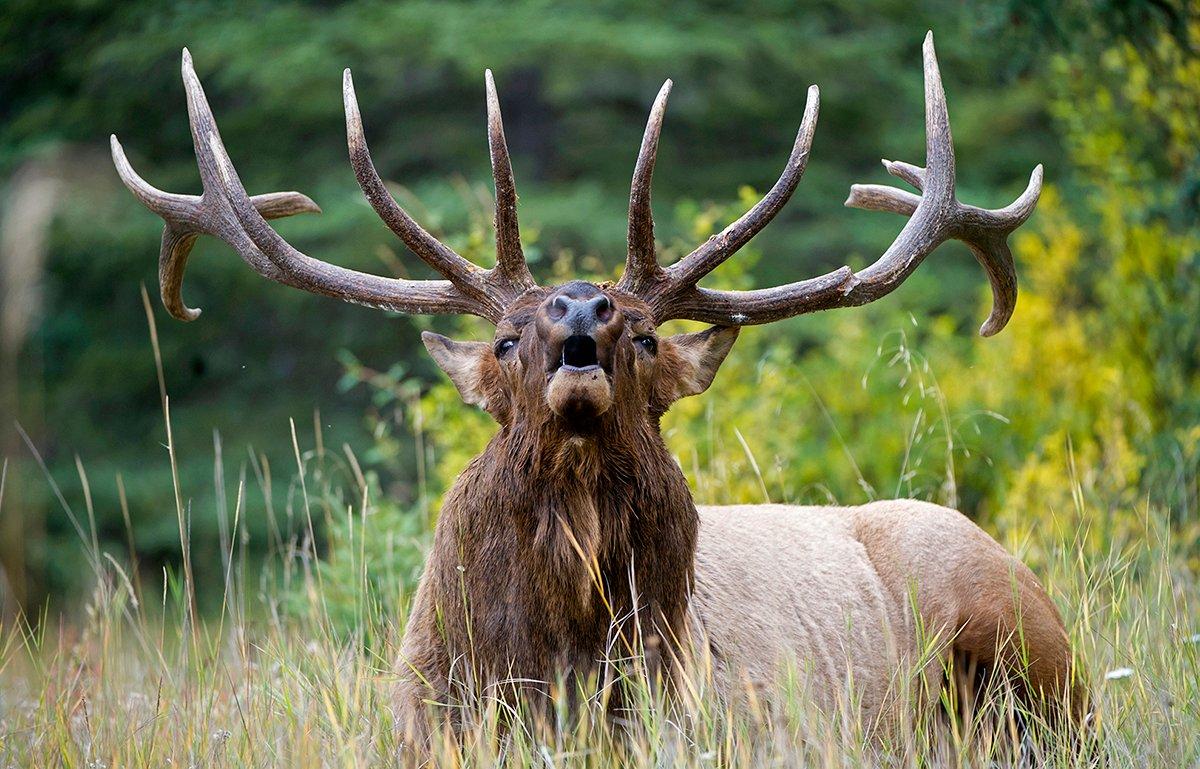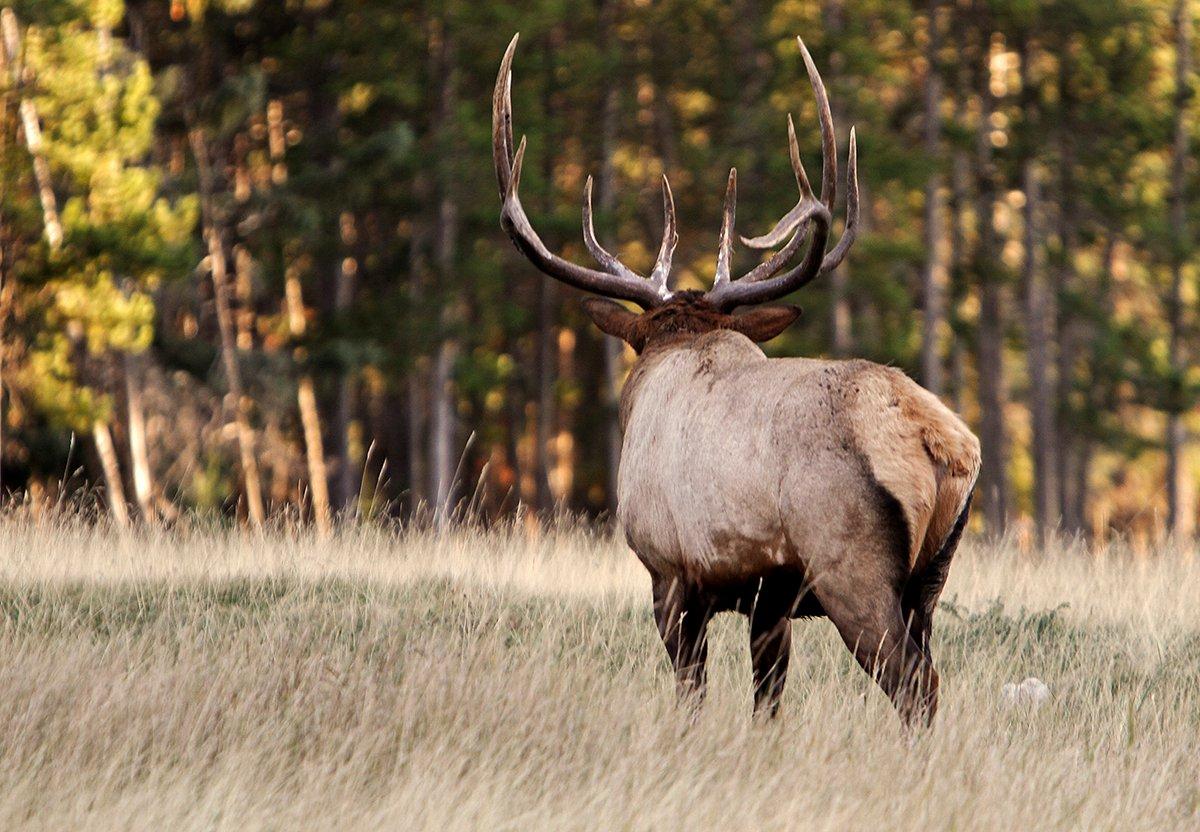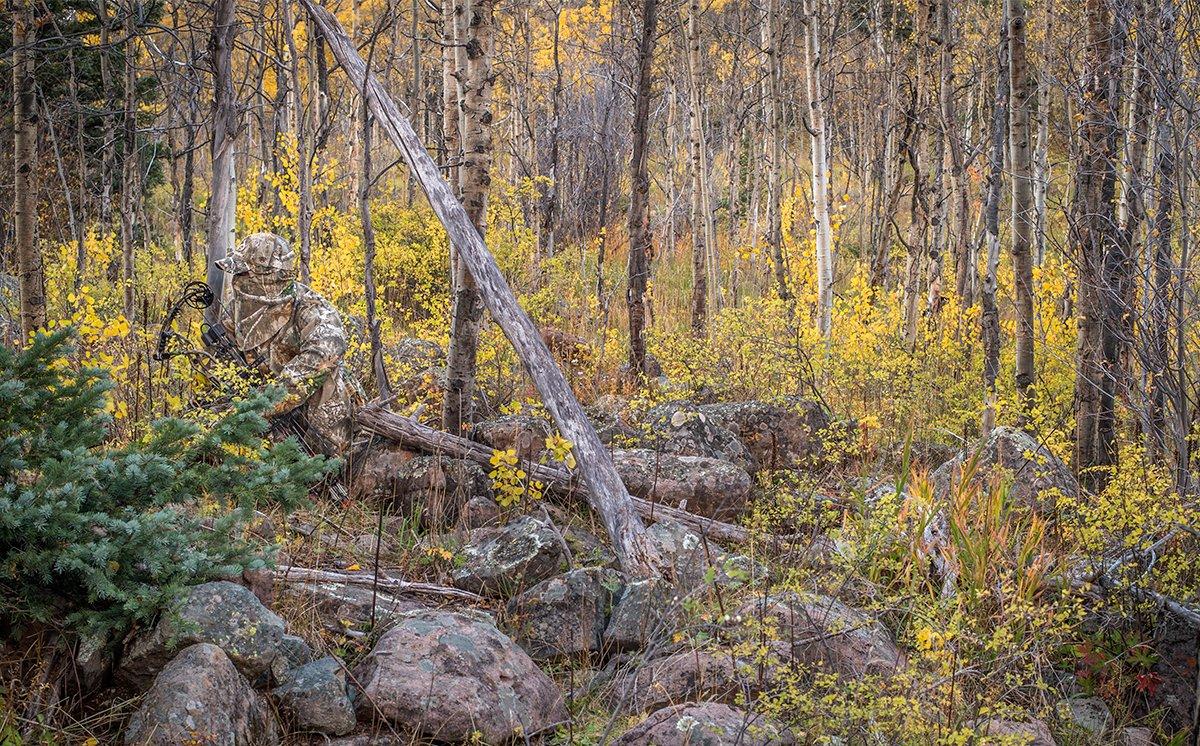Brew up a batch of these blunders and see how quickly you can ruin an elk hunt. Or don't, and fill that tag in short order.
Elk bugles change lives. I'm serious; think about it for a moment. If you're a big-game hunter coming face to face with one of the most challenging, most sought-after four-legged animals in the world, you certainly remember the first time you hear that throaty, raspy, deep bellow intro and high-pitched climax of a bull sounding off. The problem is after you hear your first one, all you want to do is hear another, and that's why it's so important to learn how to keep elk talking.
Being in a place to hear an elk (cow or bull) respond to a call is one of the reasons we practice, train, and scout most months of the year. When the big boys cut loose, we want to be there to hear it, see it, and act on it. It's also one reason so many hunters are enamored with refining their bugling techniques. Unfortunately, despite the advent of new reed designs, valves, and the all-in-one tubes and contraptions available today, most elk hunters still struggle with calling. Here are a few ways to help you stand out in the choir.
1. Problem: Your Fellow Musicians
Previously falling for unrealistic impersonations is one reason bulls have become tougher than ever to bring in using nothing but bugle calls. On any given day, in any given drainage, you can hear all sorts of tone-deaf archers echoing squeaky, unrealistic notes. There are just too many shoddy musicians in the woods, and the elk would rather go quiet.
Solution: Like most things in life, if you want to get good at something, then practice, practice, practice. But make sure your practice sessions are targeted and focused. You're wasting time practicing what you think a bull sounds like. Instead, close the house windows and mimic the sounds of a real bull, whether it's via an audio recording or video blasting through your computer speakers. There are dozens of resources available online or on smartphone apps.
That said, if you're not comfortable with your bugling skills, bugle less. A lot of other elk hunters will thank you. Also, it's tough to bring a big bull close if he doesn't think you're the real deal coming to crash the scene, especially if the ladies are already there. Instead of blowing him out, get close — as close as you can get. Then, assess the situation, and use other, less distinguishable tactics like diaphragm cow calls and silhouette decoys. Mimicking a cow is often easier for a hunter than impersonating a bull, and the combination of a visual marker might be all you need to convince a love-hungry bugler to approach.
(Killer Buy Alert: Realtree Camo Mesh Back Pro Staff Richardson Hat)
2. Problem: You're a Soloist
One of the reasons some people hunt is the thrill of traveling solo off the grid. However, if you're hunting elk, you likely sound like an alone and lost cow, and not necessarily something a big bull will run down if he's already shepherding a dozen or more cows. Call it hunting pressure, call it a lack of elk-calling talent, call it whatever you want — luring any bull to your siren sound is tough work if you're a one-man band.
Solution: Hunt with one or more friends who know how to sound like elk. You can sometimes improve your odds by traveling with like-minded folks, especially if they're good at calling. When you're not far from the action, set up in positions that compensate for wind direction and all the other basic considerations that can help at least one hunter get the drop. Then, spread out. Instead of sounding like a single lost, lonely cow, sound like several. Use hand calls in conjunction with diaphragm calls so each hunter sounds like two or more elk strung out across the landscape. Make it sound like a celebration.
(Don't Miss: Elk Calling Strategies for Today's Public-Land Hunter)
3. Problem: You're Too Quiet
One of the first mistakes I made early in my hunting career was trying to hunt elk like whitetails. I thought I needed to move through the forest like an elk ninja, but in reality, traveling via stealth mode often landed me so close to animals that when I finally did bugle or chirp, it was too sudden and close for anything to feel comfortable. Which meant that if the elk didn't bolt out of fear, I had to work from behind the eight ball to convince them all was well — something I almost never accomplished.
I'm often surprised how far sound carries in the wild, so don't get excited and hang up when you receive a string of responses from the next ridge over.
Solution: Making a little noise in the forest, and occasionally cutting a few notes on a cow call, can actually add a bit of realism to your calling and make you sound like one of the crowd. That doesn't mean you should run-and-gun over terrain while blowing a single reed call — that's just as harmful. But don't be afraid to occasionally have a heavy foot. In thick cover, crack a few branches, walk 20 yards while paying attention to everything around you, then stop to assess your new position for a long moment, and let out a few cow calls to mask it all. Then wait. You might receive a response when you least expect it.
(Killer Buy Alert: EZ Bow Sling)
4. Problem: You're Not Serious
You've practiced bugling until you're blue in the face, but you're not convincing anything on four legs that you're the real thing — or at least anything it should be concerned about.
Solution: This may seem contradictory to the point made above about shuffling through the woods, but this is about bugling specifically. If you're going to sound the horn, then do it well, and do it with gusto. You want to sound like the biggest bull within earshot, and if you hope to draw the other bad boy on the slope away from his love life, you'd better sound convincing. Learn to throw variations into your pitch and follow it up by raking trees or crashing branches. I'm often surprised how far sound carries in the wild, so don't get excited and hang up when you receive a string of responses from the next ridge over. Continue to get closer, and don't get nervous until an elk turns the volume up to 11 and you can see its foggy breath dissipate from behind a tree.
(Don't Miss: 10 Habits of Unsuccessful Elk Hunters)
5. Problem: You've Gone Mental
You've tried everything. You've worked manual calls, you've learned to use diaphragm calls, and you can't tell the difference between your bugle and the sound of the real thing, but you're still not turning heads. It's frustrating, and we've all been there.
Solution: It should go without saying that not every elk encounter is a success. In fact, it's almost ironic elk hunting is so popular in the first place considering the overall success rate in some parts of the country remains in the single digits. And while it's often the notion of the chase that keeps so many going out season after season, it's important to learn from failure if you plan to punch a tag. Elk hunting, calling elk, stalking elk — all of it — is as much a mental endeavor as it is a physical one, so if your calls sound out of tune one day, make a change and get back at it.
(Killer Buy Alert: Realtree EZ Pac-Pole)
6. Problem: You Don't Play to the Crowd
One problem with some elk-calling tutorials is they take a universal approach. Think about it in terms of having an accent. The way someone might pronounce something in Boston may not sound the same coming from someone in New York City, the Deep South, or the Upper Midwest, and it's sometimes easy to spot outsiders simply based on their pronunciation and emphasis on certain syllables. You can likely say the same thing about elk — an animal's language in a Montana range might sound different than what they're saying in Colorado, New Mexico, or the Pacific Northwest.
If you have the budget, try different diaphragm calls of varying designs, or tubes with integrated reeds.
Solution: Wherever you hunt, take some time between your calls to pay attention to the tone, volume, frequency, and other patterns you're hearing in the field when animals are relaxed and natural. Then do the best you can to mimic them. Sometime a different call can be the fix, while other times, you may need to vary your rhythms, patterns, or pitch to sound like the home team.
(Don't Miss: 8 Tips for Over-the-Counter Elk Hunting)
7. Problem: You're Out of Tune
Years ago, a friend and his brother hunted with me in Idaho, and it was one of those crazy few days when everything was textbook — bulls and cows were talking, the weather was cool and foggy, and we had multiple encounters every day. The problem was when one or the other used a diaphragm call, they sounded like a wounded crow. But they continued because it was the only brand and style they'd ever experimented with.
Solution: Find a call that works for you. No two mouths have the same shape. So, just because your buddy claims he's found the best call he's ever used, doesn't mean it will sound the same attached to your windpipe. If you have the budget, try different diaphragm calls of varying designs, or tubes with integrated reeds. If you're not shy, ask someone for constructive feedback as you practice — and practice a lot. Find calls that allow you to create specific tones that sound lifelike. In the field, you'll be a lot more confident before sounding off.
(Killer Buy Alert: Realtree EZSAW)
8. Problem: You're a One-Hit Wonder
Calling elk is a back-and-forth conversation. Among other things, a response to your call is an invitation to hear what else you have to say — but it'd better be interesting. If you only know how to make the same bellows from a bugle tube or squeaks on a single-reed or hoochie-mama style call, you'll sound like a broken record in elk speak.
Solution: Don't limit yourself to one calling routine. Some elk hunters are able to call in bulls by using only bugle calls, and if you're ever in the company of one who's successful at it, study everything they do. You'll notice most don't make the same sound twice in a row. Chances are they bugle, they growl, they chuckle, sometimes sound weak, and then follow up with a deep, brawly, challenging call. The point is whether you're bugling or using cow calls, change things up to keep the conversation going, and play with emotion.
(Don't Miss: One Crazy East Kentucky Elk Hunt)
9. Problem: You're Not Realistic
It's easy to get greedy when you're hunting elk. You might encounter a few cows and spikes, but you know there's a big boy herding cows just over the ridgeline you'd love to get the drop on. While he's not interested in what you're selling, a few satellite bulls are.
You don't want to educate another big bull by bringing him into a ruse where someone isn't ready to drop the hammer.
Solution: Call to fill your tag, not to land your name in the record books. Too many hunters worry about being a failure if they can't attract a 300-plus-inch bull, when in reality, that's the exception and not the norm. Enticing a herd bull away from a harem is not an easy task, but that doesn't mean you have to go home without filling your tag. There is no shame in calling in and taking a raghorn, or even a cow for that matter, especially if you're close to the end of the season. Anyone who loves elk meat will thank you for not holding out.
(Killer Buy Alert: Realtree Rifle Wrap)
10. Problem: You're a Poor Planner
While it's not often the case, I have seen new hunters who are terrific callers out of the box. So much so, they surprise themselves and aren't ready for what happens next, which from a certain point of view is a calling mistake. If you're one of the blessed ones, every time you blow on a diaphragm call, it sounds like a swan song to some lovestruck bull nearby, and when he hears it, he's coming on a string. But are you or another shooter ready for the action? Are you situated in a place where the natural terrain or cover might coerce the animal through your shooting lanes?
Solution: Don't call until you're 100% ready to take action. Before you and your hunting partners commit to trying to draw in an elk, have a plan or strategy in place. The funny thing about calling elk is there will be times when you don't realize you did everything right, and when things begin to go down, they go down fast, and you don't want to educate another big bull by bringing him into a ruse where someone isn't ready to drop the hammer.
The tough thing about elk calling is each situation is different, and there are no rules written in stone. Working on perfecting the vocalizations you're hearing in your area is the first hurdle to overcome. Then learn from every experience (while having fun) and always have a plan in place before you send mews or bugles echoing across rough terrain. Hopefully, after that, putting yourself in situations where you're talking the talk and convincing a bull to walk the walk will be a lot more successful for you and your hunting cohorts.
(Don't Miss: The Country's Best Elk-Hunting Units)












